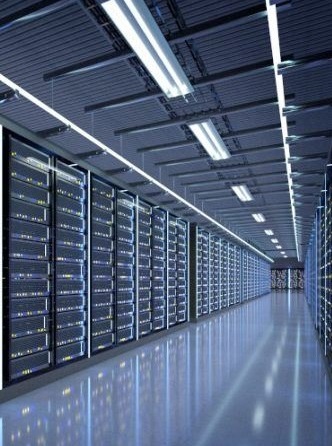Government-Grade Data Rooms and File Sharing Platforms

Just a few years ago, employees spent most of their time at their desks in the office. And applications and data were tied to a server on of the consumer. Now, thanks to digital technology, team members can choose how and where they work.
Companies are responding to this change by giving employees the ability to work from any device and any location. But providing a flexible and modern work environment is not without its challenges.
Today's businesses need to exchange large files digitally, and there is always a threat to security if it is not made through safe channels. But, not all companies understand the gravity of the situation regarding how delicate the Internet is.
How VDR can help with data management & security?
Simply storing files securely is no longer enough: you need the ability to share these files with employees, customers, and partners in real-time. The digital workplace must be used not just for exchanging documentation, but as a content collaboration platform that provides security, workflows, and user mobility and productivity. It must also guarantee IT's data security and control, which is necessary when it comes to user mobility. Securely synchronizing and sharing files is the first step that many companies to address these issues.
Virtual data rooms and software are permanently increasing a huge number of people in various business sectors. This is because they are indispensable when it comes to secure data storage and sharing between business entities and professionals.
The data room software allows enterprises to create multiple structures online. Thus, it becomes much easier to access different data files at the same time. Due to their security and flexibility, data room services are widely used by lawyers, bankers, government organizations, etc.
These virtual data rooms are platforms where you can transfer files weighing tens of gigabytes quickly and securely. They have the advantage of speed and the ability to manage access and retention.
Check out this data room overviews website to get more information.
Types of File Sharing and Exchange
The most common methods are described below.
- File Transfer Protocol (FTP)
This is the most common way to transfer files on the Internet. It allows a defined number of users with a password to access and modify files. Users access shared files stored on an FTP server site. - Peer-to-peer networks (P2P)
Here, the files are transferred between two separate devices, one-to-one, rather than one-to-many, where one server transmits or receives data from multiple devices. Usually, with this type of sharing, files are exchanged between many people. In the early days of peer-to-peer networks, services such as Napster brought together users engaged in illegal music file sharing. - Removable media
This group includes all devices that can be physically removed from a computer: flashcards, optical disks, memory cards, and removable hard drives. Users can write files from their device to removable media and then physically transfer them to whoever they want to share the files with. - Online file sharing services
This group involves popular Web services. What does it give? It provides the best opportunity for users to store and share data online for personal and commercial use. Some users can upload photos, documents, and other files to a web file-sharing platform, while others can edit them, and download those files using the same platform. Transferring files over the Internet or the cloud is suitable for quick file sharing and data backup.
What are the Benefits of File Sharing in VDR?
File sharing is an essential component of any enterprise that ensures effective dataroom software synchronization and collaboration between employees and departments.
Here are the main benefits:
- Increased efficiency. An electronic data room is a great tool for improving enterprise effectiveness because it allows employees to quickly access, edit, and manage important files and data when they need it.
- Centralizes access to files for consistency. It's hard enough to manually synchronize different versions of the same file between all the employees concerned. And a VDR allows you to solve this problem and provide your employees with always the latest and most up-to-date version of a file with the history of its change.
- Data loss protection. The software allows you to easily update and back up all of your files in real-time, mitigating the effects of a potential computer crash or leak.
How to Choose the Best Service Both For Government-Grade Data and File Sharing
Obviously, an online data room is the best tool for secure file storage and sharing, and virtual collaboration between business parties. But you will need to pay attention to the main terms that will help you to choose the best service provider:
- Data security has become more critical than ever with the rise of cybercrime. Thus, VDRs are at your disposal to protect your intellectual property, such as marketing plans, confidential information, financial data, etc. This is because they help reduce the chances associated with data breaches by properly encrypting your files during transmission and secure data room password protection between both parties.
- The best virtual data rooms are compatible with all platforms, such as Windows, Mac, iOS, and Android.
- Fast transfer. File sharing using a secure file sharing service is reliable and fast. You can exchange files of different types, such as graphics, videos, audio, etc., whether they are large or small in a few seconds. It makes the work process for your colleagues or clients faster and more convenient.
There are also other functions of VDRs like user management, customization, reports, etc. Have a look at the most known providers to evaluate their features and prices, and make a smart choice according to your business goals.
839GYLCCC1992



Leave a Reply